What makes progressive rock so intriguing? The genre has withstood the test of time since it’s inception sometime during the 1970s. It is constantly evolving, with new bands emerging to take the sonic sceptre from their forebears and guide the way along the endless path of sonic obscurity. There are countless twists and turns, and you, dear listener, may end up somewhere unexpected. But never fear, you will no doubt discover many hidden gems embedded in the soundscapes unravelling before you.

Progressive Rock
An Intriguing Journey Down The Sonic Rabbit Hole
Extended instrumental sections, complex melodies and experimental sounds.
What Is Progressive Rock?
Defining Progressive Rock
Progressive rock is a musical genre that emerged in the late 1960s and early 1970s as an offshoot of psychedelic rock. Progressive rock artists sought to break with traditional pop music convention by experimenting with longer, more complex compositions, incorporating elements of classical music and jazz, and making use of innovative recording techniques.
While some progressive rock bands achieved commercial success, the genre was largely overshadowed by the rise of punk rock in the 1977.
Nevertheless, progressive rock has exerted a significant influence on subsequent musical developments, particularly in the realms of art rock and post-rock.
Progressive rock is not easily defined, but it is typically distinguished by its experimentalism, eclecticism, and a willingness to push the boundaries of traditional rock music.
The term “progressive rock” is sometimes used interchangeably with “art rock” or “classic rock.” However, there are important differences between these genres. Progressive rock is more experimental and eclectic, while art rock is more focused on creating a unique sound and classic rock is more traditional.
The Origins of Prog Rock
Progressive rock is often said to have its roots in the late 1960s and early 1970s. This is when many of the genre’s defining characteristics first began to take shape. Some of the earliest examples of progressive rock include The Beatles‘ “I Am the Walrus,” Pink Floyd‘s Interstellar Overdrive, and Yes‘ Roundabout. These songs were all characterized by their use of extended instrumental sections, unusual time signatures, and complex melodies.
Progressive Rock in the 1970s
In the 1970s, progressive rock reached its height with bands like Genesis, King Crimson, Emerson Lake & Palmer, Yes, and Rush becoming some of the most popular groups in Britain and America. Prog-rockers were known for their lengthy songs, often over ten minutes long, which contained multiple parts that would build up to a grand finale. Many prog-rock bands also experimented with synthesizers, electronic instruments and incorporated other styles to create new sounds never before heard in rock music.
The Legacy of Progressive Rock
After the seventies, prog-rock began to decline in popularity as other genres like punk rock and disco became more mainstream. However, many groups from this era continued to release great music throughout the eighties and nineties. Many successful musicians admit to having been heavily influenced by prog-rock and continue to develop the musical landscape with sub-genres and related styles of music.
Key Elements of Progressive Rock
There are several key elements of progressive rock. These elements are found in the majority of progressive rock songs and albums, and helped to define the genre.
Use of extended instrumental sections
One of the most important elements of prog rock is the way in which the music develops over the course of a song’s duration. While conventional rock and pop music generally follow a rigid structural pattern with intro, verse, chorus and bridge parts, progressive rock tends to deviate considerably from this song form.
Is Progressive Rock Pretentious?
Prog-rock tunes often feature extended instrumental sections – sometimes lasting for several minutes – in which the various instruments engage in complex musical interactions. These passages typically serve to develop and build upon the song’s main themes, rather than simply restate them as is common in conventional pop/rock music. This gives prog-rock a much more dynamic and fluid feel than other genres of rock music. But at the same time, progressive rock could be perceived as being pretentious…
Songs of the progressive rock genre tend to be longer than the standard three and a half minute pop song, due to the development of musical themes and the use of “jam sections” in which the musicians improvise loosely over a lengthy period of time.
Complex melodies
The experimental nature of progressive rock gives rise to use of complex melodies and harmonies, often incorporating styles and themes from a diverse range of traditional and world music, not usually associated with western pop music.
Gentle Giant prominently employed the use of dissonance in their vocal harmonies, introducing a unique and unusual element to the 70s musical landscape.
The Mars Volta are widely known for their incorporation of traditional South American rhythms and melodies in their music, combining soft piano and classical guitar tones with jarring guitar riffs and in-your-face vocals.
Unusual time signatures
Progressive rock bands who constantly push the limits of conventional rock music also take aim at typical rhythmic meter and destroy any established conventions. This evolution gave rise to other genres such as math rock, with bands building on the work done by prog rock bands and taking it a step further.
Tool‘s Schism is a track that immediately comes to mind when speaking of progressive rock with unconventional time signatures. The 12/8 meter of the verse is split into two sections of 5/8 and 7/8, creating a schism in the time signature itself. The chorus is then “standard” 12/8.
Another potentially mind-boggling track is Open Car by Porcupine Tree. Like Schism, it also makes use of 5/8 and 7/8 meter in the intro guitar riff and verses, switching to conventional 4/4 for the following passage and again in the chorus.
Backing off a little, we can relax into the groove of Pink Floyd‘s timeless masterpiece Money from Dark Side of the Moon, one of the greatest rock albums of all time. The main guitar riff in the introduction, verse and chorus is in 7/8 while the jam-breakdown/bridge is in 4/4. The song then returns to 7/8 for the saxophone solo and ends in 4/4.
In 2015, when David Gilmour was asked by Uncut if there’s a song that reminds him of Roger Waters, he replied: “‘Money.’ I’m not talking about the lyric. Just the quirky 7/8 time reminds me of Roger. It’s not a song I would have written. It points itself at Roger.”
And a description of progressive rock bands with weird time signatures wouldn’t be complete without including a song by the godfathers of complicated music – Dream Theater. Their track Dance Of Eternity switches time signature almost every bar, from 4/4 to 7/8, 3/4 and back again.
Here’s the score someone typed up. Eat your heart out!
And this is how it sounds live…
And any list of time-warping prog rock bands not paying respect to Animals As Leaders have mortally sinned and must be excommunicated immediately.
Their aptly named track Tempting Time is set against a 4/4 pulse. Great. The only problem is that the riff is in 19/16, played 4 times, with a dotted 8th and 16th phrase as a turnaround.
This is how it looks when played live:
A VANDEMONIAN TRACK IN 7/8
A VANDEMONIAN TRACK IN 7/8
Experimentation With New Sounds
Progressive Rock pioneers King Crimson are the epitome of experimental music with the incorporation of multiple genres, influences and sounds. Their repertoire features a multitude of instruments not often found in conventional rock music, such as orchestral strings, flute and free-jazz saxophone, as well as reversed-guitar effects and outlandish production styles.
Their 1971 album Islands is known for divergence from previous trends in rock music, with their following release Larks’ Tongues in Aspic regarded by many as the creative peak of their entire discography.
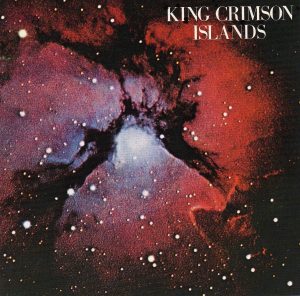

Both albums were and remain extremely experimental – even by today’s standards – and the musical traits of many modern artists can be traced back to King Crimson‘s creativity. From Nirvana to Tool, The Mars Volta to Primus, Porcupine Tree to The Flaming Lips, all have publicly admitted to being heavily influenced by the godfathers of progressive rock.
Prog Rock Today
Modern Progressive Rock Bands
Click on the band names to be redirected to their respective profiles on Spotify.
Porcupine Tree
Initially the solo project of the now predominantly solo artist Steven Wilson, British band Porcupine Tree was formed out of his desire to compose and perform music in a band setting. Over the course of their discography, the band has crossed genres such as psychedelic, space and experimental rock, as well as progressive rock and metal and divulging into the more mainstream alternative rock spectrum.
Porcupine Tree achieved international success with their album “In Absentia” in 2002, and they are considered to be one of the leading bands in the progressive rock genre.
Tool
Tool is known for their dark and brooding vibe, unconventional time signatures and song structures. Their music is heavy, melancholic and atmospheric; each member a virtuoso on their respective instrument is given space to unfurl their individual and collective brilliance.
Tool has released four studio albums, one extended play and one box set. The band was formed in 1990 and rose to prominence with their 1993 debut album Undertow. Their efforts to unify musical experimentation, visual arts, and a message of personal evolution continued with AEnima (1996) and Lateralus (2001), gaining critical acclaim and commercial success. The group’s fourth album, 10,000 Days (2006), was released after a five-year hiatus during which each member worked on side projects. Their seventh album Fear Inoculum was released in 2019.
A Perfect Circle
A Perfect Circle is a progressive rock band, fronted by guitarist and vocalist of Tool, Maynard James Keenan. The band’s first album, Mer de Noms, was released in 2000 and received critical acclaim. The following album Thirteenth Step, cemented their place in rock history. Their music is more melodic and uplifting as Tool, yet contains a similar urgency and vibe.
The band went on hiatus in 2004, while Keenan turned his focus to his side-project Puscifer and then to the production of further Tool albums. Intermittent touring in the early 2010s was followed by long years of inactivity before the release of their final album to date in 2018 – Eat The Elephant.
Dream Theater
Dream Theater is an American progressive metal band formed by Berklee College of Music students John Petrucci, John Myung, and Mike Portnoy. They are widely regarded as one of the most versatile and technically proficient bands in the genre, with a sound that has been described as “progressive metal, post-thrash, hard rock, and even prog pop”. The band’s style has also been described as metalcore and are known for their experimental use of unconventional rhythmic meter. Dream Theater has released fourteen studio albums to date.
Formed in 1985, the group has released 15 studio albums and sold over 12 million records worldwide and are considered to be one of the most influential progressive metal bands of all time. Dream Theater’s live shows are known for their energy and intensity, with each member contributing complex and intricate performances.
Opeth
Opeth is a Swedish heavy metal band from Stockholm, formed in 1990. The group has been through several lineup changes, with guitarist, vocalist, and songwriter Mikael Åkerfeldt being the only constant member. Opeth’s music is characterized by progressive elements, eclectic influences, and electoronic experimentation. Although the band has been through many lineup changes, their music has always been characterized by progressive elements, eclectic influences, and electronic experimentation.
Animals As Leaders
With feet firmly planted in the metal genre as well as belonging to the wider prog rock scene, Washington DC based band Animals As Leaders defy the laws of physics with their intricately complex progressive metal.
The band was formed in 2007 by guitarist/vocalist Tosha Kopper and drummer Matt Garstka. Since its formation, Animals As Leaders has released five studio albums: Animals As Leaders (2009), Weightless (2011), and The Joy Of Motion (2013) The Madness of Many (2016), and Parrhesia (2022).
In 2009, Animals As Leaders won the Best New Artist award at the Metal Hammer Golden God Awards. In addition, their self-titled debut was named Album of the Year by Metal Hammer magazine. The band’s second album, Weightless, was also nominated for a Grammy Award in 2012.
Animals As Leaders’ instrumental music is often described as progressive metal or math metal. However, the band members themselves prefer to simply call their music “progressive music.” Their music combines elements of progressive rock, heavy metal, and jazz fusion.
Mastodon
Mastodon is an American progressive rock/metal band from Atlanta, Georgia, formed in early 2000 and composed of bassist/vocalist Troy Sanders, guitarists Brent Hinds and Bill Kelliher, and drummer Brann Dailor. Mastodon has released seven studio albums: Leviathan (2004), Blood Mountain (2006), Crack the Skye (2009), The Hunter (2011), Once More ‘Round the Sun (2014), Emperor of Sand (2017), and Medium Rarities (2020).
Mastadon have released five albums over the course of their career, lyrically dealing with themes of science fiction and fantasy. The band has released seven studio albums: Leviathan (2004), Blood Mountain (2006), Crack the Skye (2009), The Hunter (2011), Once More ‘Round the Sun (2014), Emperor of Sand (2017), and Medium Rarities (2020).
Karnivool
Karnivool is one of the most prominent alternative / progressive rock bands from Down Under, having built a devoted following of fans over the years with their heavy touring schedule. With heavy but melodic guitars coupled with enigmatic drumming and captivating vocals, the band’s brilliant second album Sound Awake propelled them to international recognition with a solid offering on every single track. Other albums include Themata (2005) and Asymmetry (2013).
Karnivool emerged from a high school band of vocalist Ian Kenny and Drew Goddard and the name possibly came about when the group were derisively called a bunch of clowns. They have achieved Platinum, Gold and Gold status for each of their three albums respectively.
Muse – Are Muse Prog Rock?
One of the best-known progressive rock bands in the world, having crossed over from alternative/prog rock obscurity to radio-ready pop rock, Muse have been trailblazers in creative and experimental rock music ever since their emergence with their first releases Showbiz and Origins Of Symmetry. Singer, guitarist and pianist Matt Bellamy is undoubtedly a musical genius, with near-perfect proficiency on all his instruments on top of his songwriting talent which has earned him two Grammy Awards, two Brit Awards, five MTV Europe Music Awards and eight NME Awards.
Caligula’s Horse
Caligula’s Horse is another progressive rock band from Australia. They formed in 1999 and have released five albums to date. Named after the Roman emperor Caligula, who was known for his cruelty and insanity, the band is best known for its unique blend of progressive rock and folk music.
The band look to convey the idea that humanity is heading towards an inevitable destruction (like the Roman Empire) with the theme playing a dominant part in many of the band’s songs. Despite their gloomy outlook, Caligula’s Horse has a distinctive sense of humour. Their songs often feature darkly humorous lyrics and quirky musical arrangements.
The Dear Hunter
The Dear Hunter is an American rock band from Providence, Rhode Island. Their sound has been described as a cross between progressive rock and indie rock. Formed in 2005 by Casey Crescenzo after the dissolution of his previous band, the Receiving End of Sirens, The Dear Hunter has released ten studio albums, with their most recent, Antimai, released in 2022.
Best Modern Progressive Rock Albums
Instead of recapping the myriad of lists of prog rock albums that delve into the beginnings of the genre in the 1970s, I have instead chosen to focus on more recent releases. The word modern is always relative, so to clarify, the following is a list of albums released from 1990 onwards that were critical and commercial successes.
Tool – Lateralus
Lateralus is Tool’s third studio album. Produced by David Bottrill and Tool, and engineered by Joe Barresi, Lateralus is notable for its use of time signatures that are not based on the standard 4/4 meter, something that was hinted at on the band’s previous album, Ænima. It is very dark, broody and intense, and features Schism perhaps the most prominent track of the band.
The album’s title refers to the Fibonacci sequence of numbers, which appears throughout the record’s artwork and in its song structures. Lateralus debuted at number one on the Billboard 200 chart, selling over 555,000 copies in its first week. The album was well-received by critics, and is considered by many to be one of the best albums of 2001. In 2002, the album was nominated for a Grammy Award for Best Rock Album.
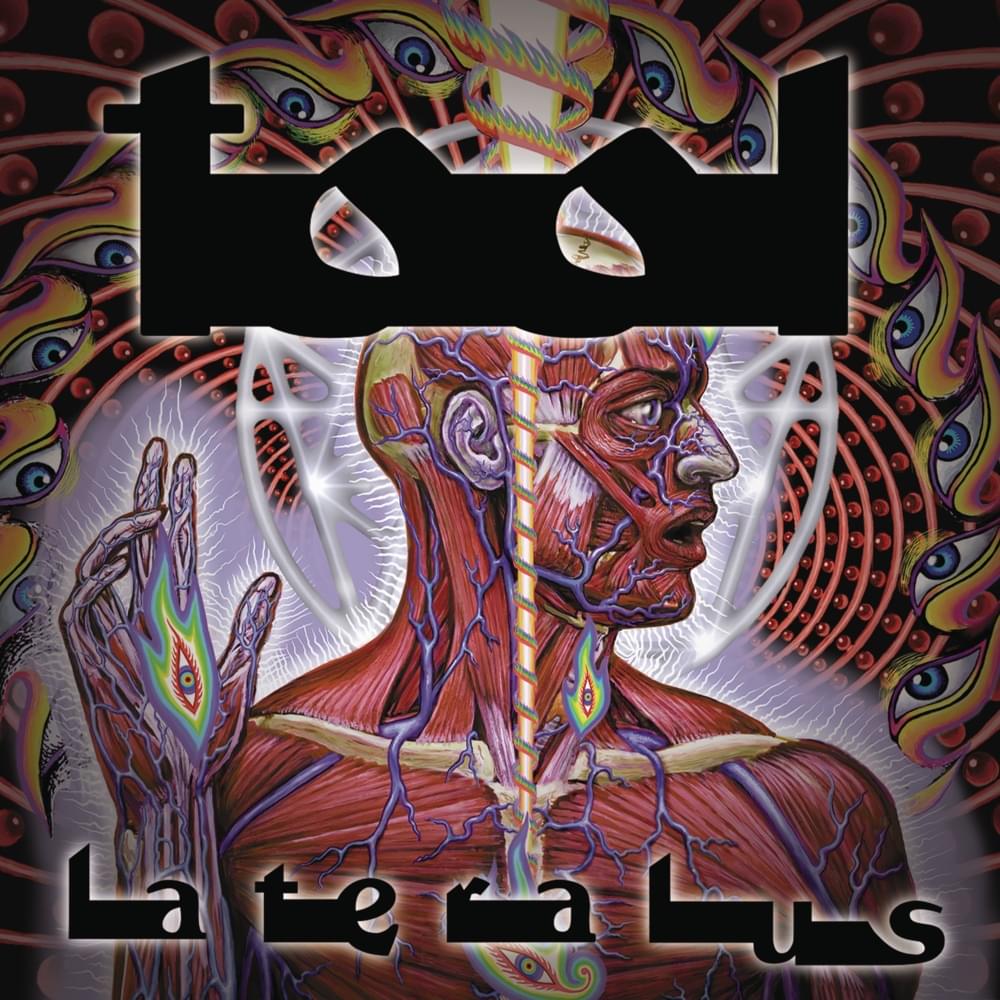
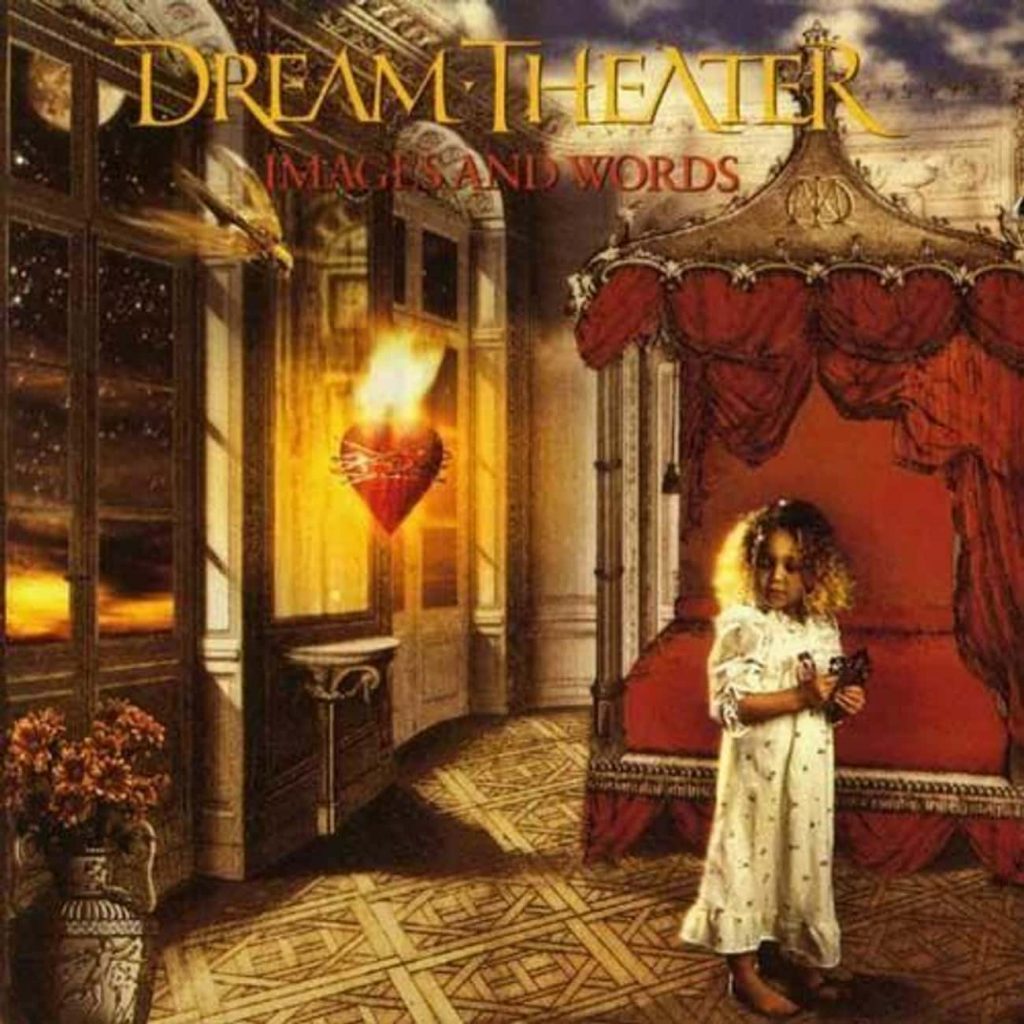
Dream Theater – Images and Words
Dream Theater’s 1992 album Images And Words is widely considered to be one of the greatest progressive metal albums of all time. The album showcased the band’s incredible musicianship and songwriting ability, and helped to establish them as one of the leading acts in the genre. With its complex arrangements and powerful emotional impact, Images And Words is a sonic masterpiece that is still ranked as the band’s best 20 years after its release.
A Perfect Circle – Thirteenth Step
Thirteenth Step, A Perfect Circle’s second album, is one of the band’s most acclaimed releases. Released in 1999, the album received widespread critical acclaim and was nominated for several Grammy Awards.
It reached number three on the Billboard 200 chart and remained on the chart for over a year. Thirteenth Step is A Perfect Circle’s most commercially successful album, but it is also one of the band’s best. The album’s vibe is dark and moody, yet atmospheric and moving. The lyrics are deeply emotional and personal, and they touch on themes of pain, loss, and despair. Despite the dark subject matter, the music itself is uplifting and hopeful.
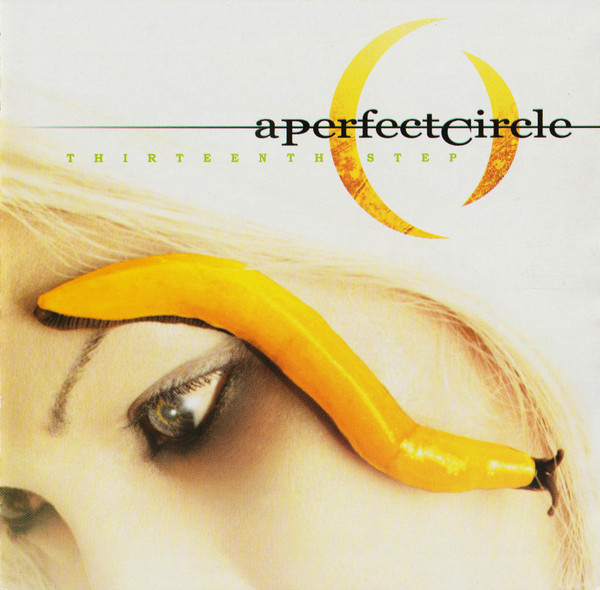
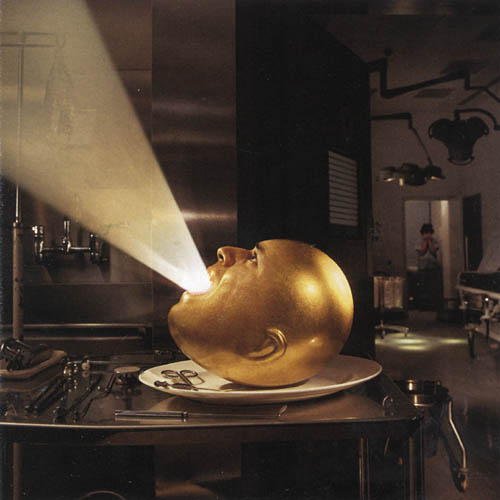
The Mars Volta – Deloused in the Comatorium
The Mars Volta‘s debut album Deloused in the Comatorium, is a unique and powerful album that helped to usher in a new era of progressive rock. The album features intricate song structures, frenetic energy, and passionate vocals and is full of complex, progressive rock songs that showcase the band’s musicianship. It is also notable for its use of Latin and Spanish influences.
Deloused in the Comatorium is a concept album that tells the story of a man named Cerpin Taxt who commits suicide. The album is split into three parts, each telling a different stage of Cerpin’s life. The first part, “Inertiatic ESP”, tells the story of Cerpin’s suicide. The second part, “Eriatarka”, tells the story of Cerpin’s life after his death. The third part, “Take the Veil Cerpin Taxt”, is a collection of thoughts and memories from Cerpin’s friends and family.
The album is musically complex, with multiple time signature changes and odd time signatures. The Mars Volta are known for their experimental and progressive rock sound, and this album is no exception. The songs are long and intricate, with multiple layers of sound. The lyrics are often cryptic and difficult to understand, but they add to the overall atmosphere of the album.
Karnivool – Sound Awake
Karnivool’s “Sound Awake” is a very unique and diverse album, that was released to critical acclaim by fans and music critics alike.
It features innovative use of conventional instruments – guitars, bass, drums and vocals – electronics and unusual time signatures, all the while remaining accessible with captivating pop vocal melodies. Every track is captivating, making the whole album a tour de force, with driving rhythms, soaring melodies, and gorgeous harmonies.
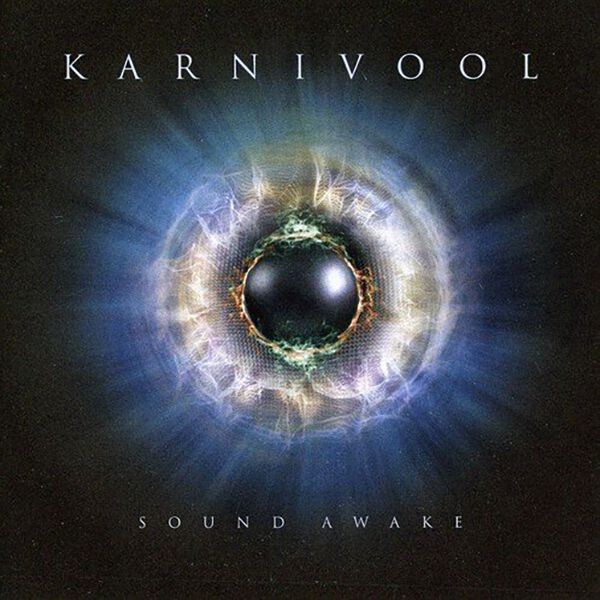
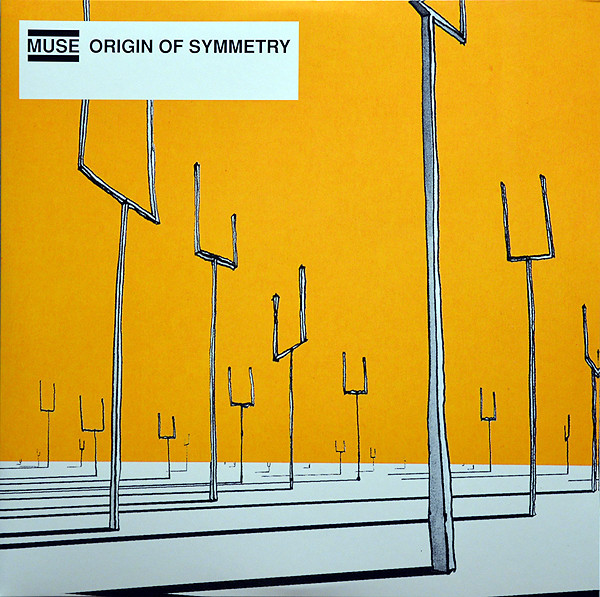
Muse – Origin of Symmetry
Muse‘s second album, Origin of Symmetry, was released in 2001 to huge success. It reached number three on the UK Albums Chart and was certified platinum in Australia, Canada, and the UK. The album also produced three top 20 singles in the UK. In 2002, Origin of Symmetry won the Grammy Award for Best Rock Album.
Definitely on the more lighter mainstream side, the album blends alternative rock, classical, and electronic music with excellent songwriting and vocal melodies.
Porcupine Tree – Fear Of A Blank Planet
Porcupine Tree’s 2005 album, Fear of a blank planet, is a powerful and evocative work that deals with the fear of an unknown future. The music is typically lush and melodic, with a strong emphasis on acoustic instruments and vocals. The lyrics are often abstract and symbolic, but they manage to convey a strong sense of unease and dread.
Overall, Fear of a blank planet is an excellent example of why Porcupine Tree is one of the most respected bands in the progressive rock genre. Their music is always fresh and original, while still retaining the essence of what makes progressive rock so appealing.
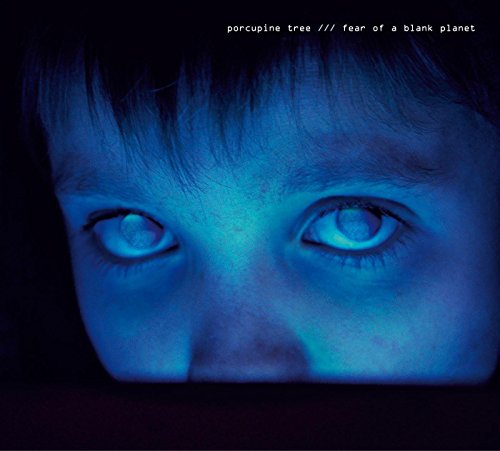
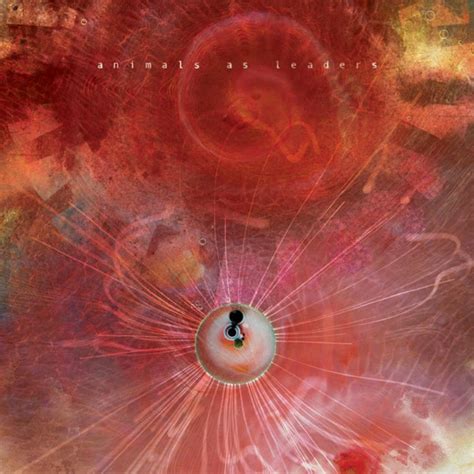
Animals As Leaders – The Joy of Motion
The Joy of Motion is Animals As Leaders second album, and it is a truly stunning piece of work. The album combines lush melodies with complex polyrhythmic rhythms in a way that is both beautiful and mesmerizing.
From the opening track, “Kazuya’s Lullaby,” which features a gorgeous melody played on a Japanese koto, to the metal-influenced riffs of “CAFO” and the Latin-flavored rhythms of “Tooth and Claw,” the album is a veritable tour de force of modern progressive music. It is music that demands your attention, but with each successive listen, The Joy of Motion reveals new depth and nuance, making it a truly rewarding experience.
Mastodon – Leviathan
Mastodon‘s sixth studio album, Leviathan, is a conceptual masterpiece based on Moby Dick that tells the story of an underwater world. The band’s unique blend of metal and progressive rock is on full display here, as they explore new sonic territory while remaining true to their signature sound.
This is an album that demands to be listened to from start to finish in order to fully appreciate its scope, but even individual songs stand out as some of Mastodon’s best work. Leviathan is a true milestone in the band’s career, and one that will be remembered for years to come.
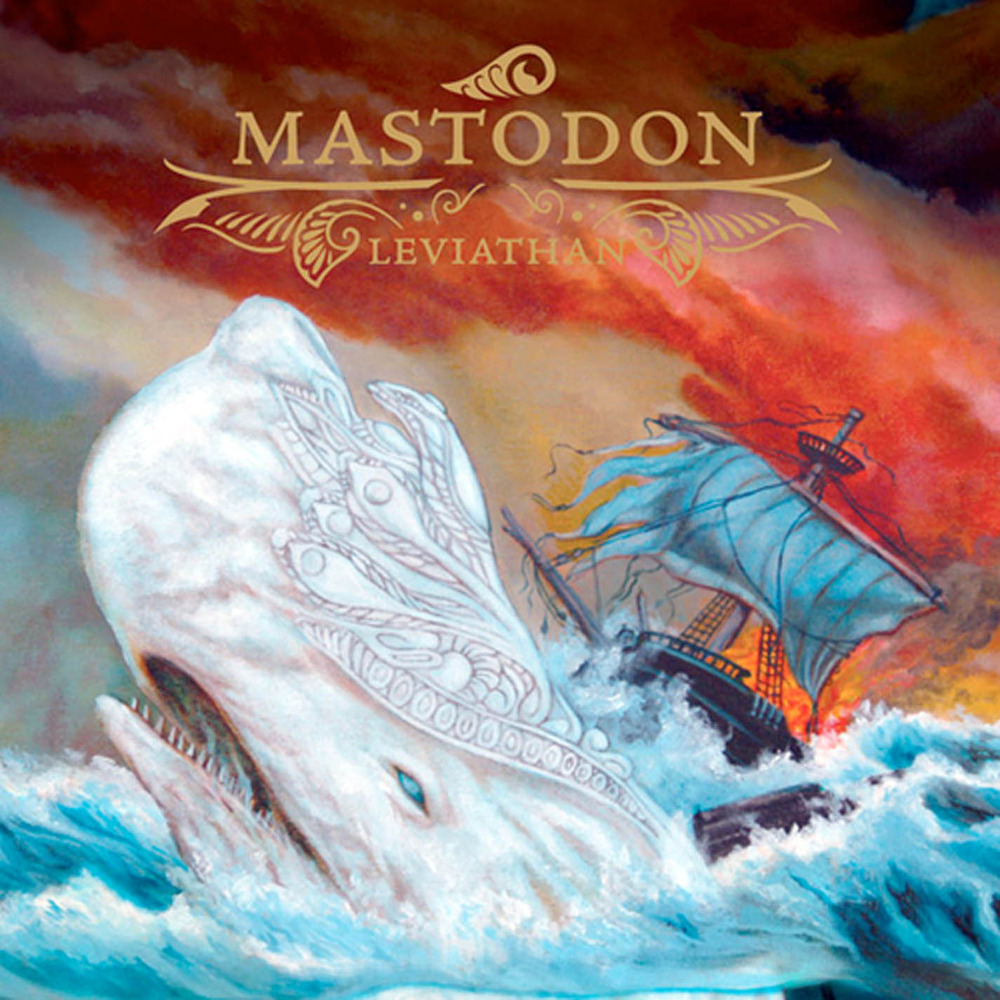
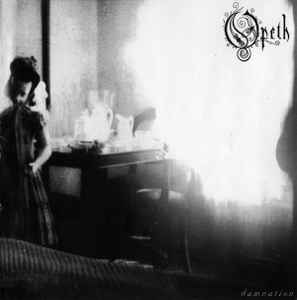
Opeth – Damnation
Swedish metal band Opeth released their eighth studio album, Damnation, in 2003. The album is a departure from the death metal style the band is known for, instead exploring a more mellow and atmospheric sound.
The title track, “Damnation”, is a slow and atmospheric song that sets the tone for the rest of the album. “Closure” is another song with a broody vibe, but with a more hopeful feeling. “Windowpane” is an up-tempo track with a dark and foreboding feeling.
The album closer, “By the Pain I See in Others”, is a return to the heavier sound of Opeth’s earlier work. Overall, “Damnation” is an interesting album that shows a different side of Opeth.
JACK KETCH
Genres Related To Progressive Rock
Psychedelic Rock
Psychedelic rock is a subgenre of rock music that emerged in the late 1960s. It is characterized by distorted guitars, extensive use of modulation, and a general sensibility of experimentation. The term “psychedelic” was originally coined in the late ’60s to describe the effects of hallucinogenic drugs such as LSD, and many bands who adopted a psychedelic style were also influenced by these substances. The most famous example of this is probably the band Pink Floyd, who produced their first two albums, The Piper at the Gates of Dawn and A Saucerful of Secrets, under the influence of LSD.
Although the origins of psychedelic rock can be traced to the United States and Britain in the late ’50s and early ’60s, it wasn’t until the end of the ’60s that the style really took off. That year saw the release of several influential psychedelic rock albums, including The Beatles‘ Revolver, The Doors‘ Strange Days, and Pink Floyd‘s Piper at the Gates of Dawn. These albums set the stage for an explosion of psychedelic rock in 1967 and 1968, when many new bands emerged with a similar sound and sensibility. Some of the most famous examples of this period include The Jefferson Airplane, The Grateful Dead, Cream, The Jimi Hendrix Experience, and Hawkwind.
In addition to being associated with hallucinogenic drugs, psychedelic rock was also closely linked with other counterculture movements like hippie culture and anarchism. Many bands adopted an anti-establishment attitude in their music and lyrics, which often included references to political issues such as war and oppression. Radical social change was also a recurring theme present in the lyrics of the genre. This association with radical politics led to a great deal of controversy around psychedelic rock in its heyday, with some critics calling it “music for madmen.”
Art Rock
Art rock is a subgenre of rock music that emphasizes artistic elements and experimentation. Like prog rock, art rock bands often use unusual time signatures, extended instrumentation, and complex song structures. They also incorporate elements of other genres, including folk, classical, and avant-garde music.
Symphonic Rock
Symphonic rock is a genre of rock music that is characterized by the use of symphonic instruments, including violins, cellos, and French horns.
The genre first gained popularity in the 1970s with bands like Yes and Genesis, who incorporated classical music influences into their sound.
Symphonic rock continued to be popular in the 1980s with bands like Journey and Toto, and has since seen a resurgence in popularity with modern bands like Coheed and Cambria and Muse.
Krautrock
Krautrock is a style of music that developed in Germany in the late 1960s and early 1970s. It’s a mix of various genres, including psychedelia, rock, jazz, and electronic music.
The term “krautrock” was coined by British music journalists to describe the new wave of German bands that were influenced by psychedelia and the avant-garde.
Krautrock has had a significant influence on subsequent popular music genres, such as cyberpunk, post-punk, new wave, and indie rock.
Some of the most famous krautrock bands include Kraftwerk, Can, Neu!, and Faust.
Post Rock
Post rock is a form of rock music that developed in the 1990s. It is characterized by its use of lengthy, esthetic song structures and unconventional instrumentation.
Post rock bands typically make heavy use of repetition and build their sound around rhythmic, often hypnotic, grooves. Instrumental melodies are often accompanied by vocal harmonies, and the lyrics (if present) are usually minimalistic or nonexistent.
Prominent post rock artists include Godspeed You! Black Emperor, Mogwai, God Is An Astronaut and Sigur Ros.
Math Rock
Math rock is a genre of alternative rock music that employs mathematical, often irregular time signatures, and is known for its complex, dynamic interplay between instruments.
The term math-rock refers to the unconventional time signatures and rhythmic patterns used by bands to create often jarring, syncopated music. Meter such as 5/4, 6/8, 7/4 and many others have been used by bands often in combination with alternating time signatures at the same time. The drummer may be playing a 4/4 beat while the rest of the band overlay it with 6/8 to cause the listener to feel like something is “wrong” while everything fits perfectly.
FAQ: Is Pink Floyd considered prog rock?
Yes, Pink Floyd is considered by many to be one of the greatest progressive rock bands ever . And yes, they have some of the most iconic and well-known songs in all of rock music. But there’s so much more to Pink Floyd than just “Another Brick in the Wall” and “The Dark Side of the Moon.”
For starters, Pink Floyd is one of the few classic rock bands that are still relevant today. In an era where many young people are rediscovering classic rock for the first time, Pink Floyd remains as popular as ever. They’re consistently ranked as one of the greatest bands of all time by publications like Rolling Stone, and their songs continue to be played on radio stations around the world.
But beyond their musical legacy, Pink Floyd also has a fascinating history that is worthy of exploration. The band was founded in 1965 by Syd Barrett, Roger Waters, Nick Mason, and Richard Wright. Barrett was the primary songwriter and creative force behind early Pink Floyd albums like “The Piper at The Gates Of Dawn” and “A Saucerful Of Secrets.” Unfortunately, mental health problems began to take their toll on Barrett not long after; he left the band in 1968 due to his deteriorating condition (he would sadly die just a few years later).
So whatever your taste in music may be, there’s sure to be something for you within the vast world of progressive rock.
VANDEMONIAN EP
FREE DOWNLOAD
Enter your email below to receive a FREE DOWNLOAD of our Vandemonian EP and 3 bonus tracks from Xenophilia!